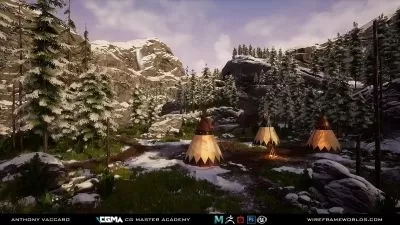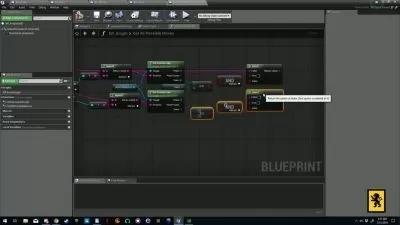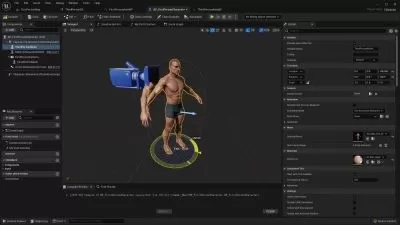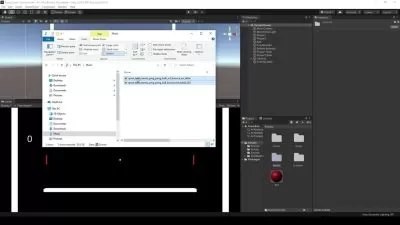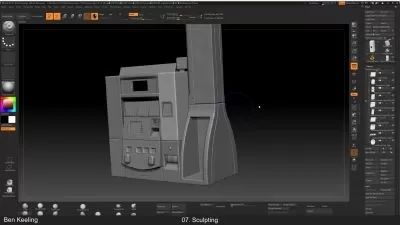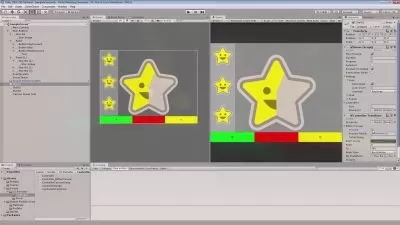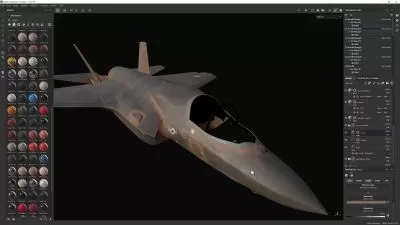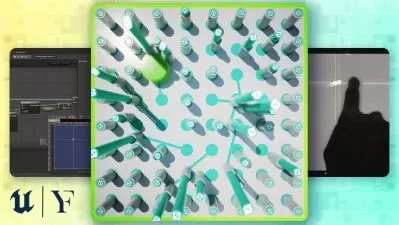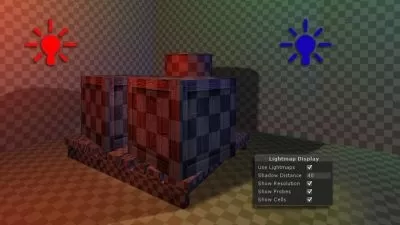Procedural animation for humans in Unreal Engine 5
Lincoln Margison
8:47:09
Description
Create a dynamic and flexible animation system which can be adapted to any style of character movement
What You'll Learn?
- The fundamentals of procedural animation
- How to create a fully procedural walk and run cycle
- How to analyse and incrementally improve your animations
- How to create custom functionality within control rig
- How to control every element of your animation through logic and variables
- How to use IK for realistic foot placement
- How to predict player footsteps based on the environment
- How to seamlessly blend between different angles of movement
- How to create a dynamic cycle-time that adapts to different speeds
- How to create a natural and smooth human animation system
- How to create a system which can be modified for various styles of character movement
Who is this for?
What You Need to Know?
More details
DescriptionIn this course you will learn how to create a fully procedural walk/run animation system for characters, entirely within Unreal Engine 5.1+
This system will allow you to control every aspect of the characters walk and run style, with manual control over every bone, using custom logic and variables inside Control Rig (which allows for very good performance, allowing it to be used on many characters at once).
With a fully procedural animation system, your characters will fit within their environment and adapt their movement based on the surroundings. Whether the character is walking, running or anywhere in between, standing with one foot on a ledge, walking across stepping stones, running up a ramp backwards whilst spinning in circles, or any other situation your character may find themselves in.
To create this level of interaction with traditional static animations, you would need to create hundreds if not thousands of walk cycle variations and a complex system to blend between different animations at the appropriate times. Then if you'd like to make a tweak, such as to change the character's walk style or speed, you would have to start all over again.
Instead, with a procedural system, we figure out the logic that dictates how a human actually walks: where they place their feet, how their speed influences their stride time, how they swing their hips and spine to accommodate for their leg movements; to create an intelligent system that mimics how a human (or any character)Â would walk.
After you've created the system (which is included as a download for use or reference), you can adapt it to any character you may want in the future. For example, you may create a heavier & stronger character for your game, perhaps a robot / mech / monster, and instead of spending hours creating walk cycles to figure out how he should move, you simply tweak a few numbers in the procedural system to see how the character looks when he stamps his feet whilst walking, or takes longer strides, or swings his arms like a madman.
We don't rely on any major inbuilt functions within the engine, and so the same concepts and techniques can apply to any form of procedural animation. For example, after completing the course, you may want to take what you've learnt about creating procedural human animations and use the same concepts to make a procedural swimming animation for a shark. Or procedural weapon recoil controlled by the strength of the gun. Or a parkour climbing system. In theory, anything that can be animated can be animated procedurally. Is it always beneficial? No. But procedural animation is the best solution for any animations which need to be adaptive and change based on the environment, user input, or gameplay events. The best part is, everything we create in this course runs as a single node in the animation blueprint, allowing you to blend it with regular animations, or any input pose for the character.
This is not a course where IÂ simply tell you what buttons to press. Every single step is explained, and the thought process behind decisions about what to do next is discussed, so you will always have an idea of why we're doing each step. We routinely take a look at what we have created so far to analyse it for further improvements.
The information and ideas in this course are not available anywhere else, trust me;Â IÂ have looked, as all of the solutions are a result of 7 years of experimentation with procedural animation. This method of animation isn't being done to this degree by any game developers yet, only basic hybrid IK systems, and IÂ strongly believe it will be the primary form of character animation in the next few years.
I have set up a Discord server where you can directly ask me any questions, or see the results of other students of the course. If there are any areas that you don't understand or need further explanations, I'll be happy to help, and look forward to seeing your results!
Who this course is for:
- Game developers wanting to create a robust system to save 100s of hours hand-animating walk cycles
- Animators who want to prototype and visualise different animation styles rapidly
- Unreal Engine developers who want their characters to interact with the environment
In this course you will learn how to create a fully procedural walk/run animation system for characters, entirely within Unreal Engine 5.1+
This system will allow you to control every aspect of the characters walk and run style, with manual control over every bone, using custom logic and variables inside Control Rig (which allows for very good performance, allowing it to be used on many characters at once).
With a fully procedural animation system, your characters will fit within their environment and adapt their movement based on the surroundings. Whether the character is walking, running or anywhere in between, standing with one foot on a ledge, walking across stepping stones, running up a ramp backwards whilst spinning in circles, or any other situation your character may find themselves in.
To create this level of interaction with traditional static animations, you would need to create hundreds if not thousands of walk cycle variations and a complex system to blend between different animations at the appropriate times. Then if you'd like to make a tweak, such as to change the character's walk style or speed, you would have to start all over again.
Instead, with a procedural system, we figure out the logic that dictates how a human actually walks: where they place their feet, how their speed influences their stride time, how they swing their hips and spine to accommodate for their leg movements; to create an intelligent system that mimics how a human (or any character)Â would walk.
After you've created the system (which is included as a download for use or reference), you can adapt it to any character you may want in the future. For example, you may create a heavier & stronger character for your game, perhaps a robot / mech / monster, and instead of spending hours creating walk cycles to figure out how he should move, you simply tweak a few numbers in the procedural system to see how the character looks when he stamps his feet whilst walking, or takes longer strides, or swings his arms like a madman.
We don't rely on any major inbuilt functions within the engine, and so the same concepts and techniques can apply to any form of procedural animation. For example, after completing the course, you may want to take what you've learnt about creating procedural human animations and use the same concepts to make a procedural swimming animation for a shark. Or procedural weapon recoil controlled by the strength of the gun. Or a parkour climbing system. In theory, anything that can be animated can be animated procedurally. Is it always beneficial? No. But procedural animation is the best solution for any animations which need to be adaptive and change based on the environment, user input, or gameplay events. The best part is, everything we create in this course runs as a single node in the animation blueprint, allowing you to blend it with regular animations, or any input pose for the character.
This is not a course where IÂ simply tell you what buttons to press. Every single step is explained, and the thought process behind decisions about what to do next is discussed, so you will always have an idea of why we're doing each step. We routinely take a look at what we have created so far to analyse it for further improvements.
The information and ideas in this course are not available anywhere else, trust me;Â IÂ have looked, as all of the solutions are a result of 7 years of experimentation with procedural animation. This method of animation isn't being done to this degree by any game developers yet, only basic hybrid IK systems, and IÂ strongly believe it will be the primary form of character animation in the next few years.
I have set up a Discord server where you can directly ask me any questions, or see the results of other students of the course. If there are any areas that you don't understand or need further explanations, I'll be happy to help, and look forward to seeing your results!
Who this course is for:
- Game developers wanting to create a robust system to save 100s of hours hand-animating walk cycles
- Animators who want to prototype and visualise different animation styles rapidly
- Unreal Engine developers who want their characters to interact with the environment
User Reviews
Rating
Lincoln Margison
Instructor's Courses
Udemy
View courses Udemy- language english
- Training sessions 124
- duration 8:47:09
- English subtitles has
- Release Date 2023/10/02






